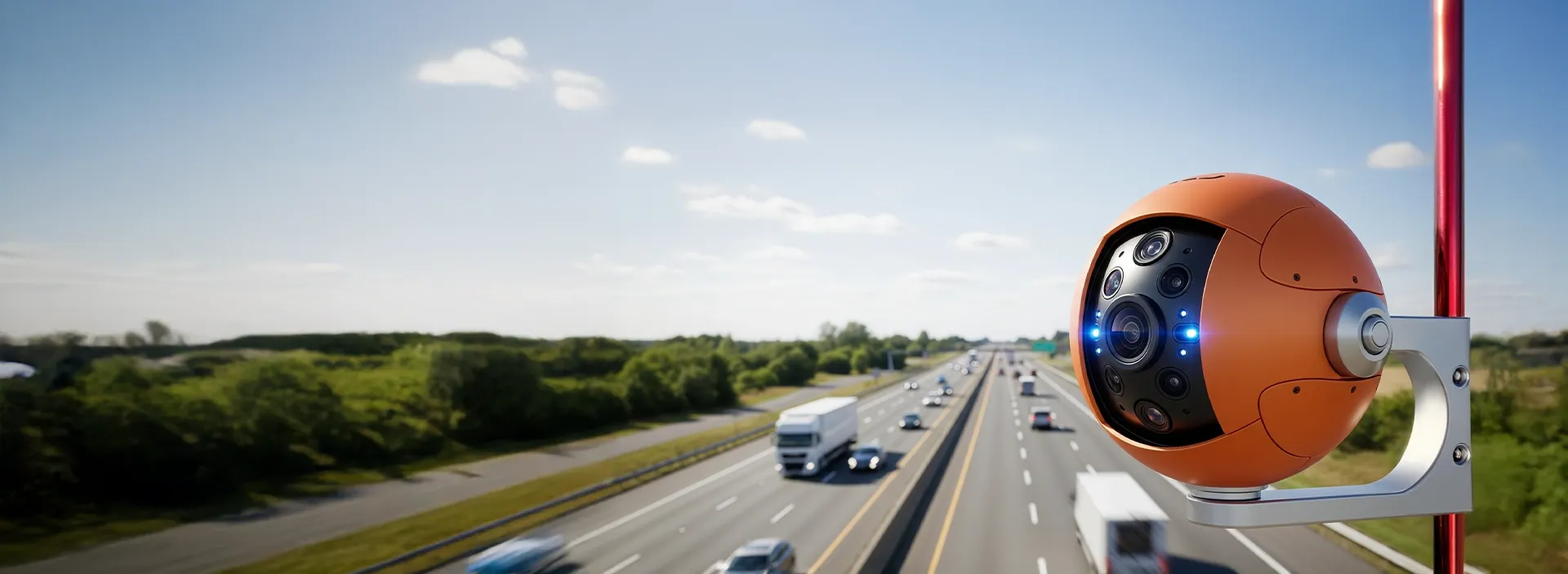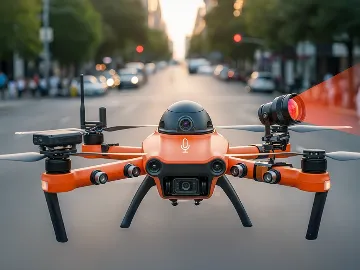Cameras are everywhere in modern transportation: on delivery trucks, transit platforms, highways, warehouses, and ports. But when a shipment is delayed, an accident happens, or a compliance issue arises, decision-makers still rely on manual reviews, scattered reports, or incomplete data to figure out what went wrong.
Consider the modern transportation network as a dynamic system, constantly in motion, generating vast visual data streams. Every vehicle on the road, every pedestrian crossing, every container loaded or unloaded. Each moment contains information critical to safety, efficiency, and coordination.
Computer vision in transportation enables the industry to detect incidents as they happen, validate cargo conditions without manual checks, and monitor infrastructure and fleet behavior with consistency and scale. And it does all this automatically, at scale, and without increasing manual workload. This article examines how transportation enterprises are applying computer vision development services to solve operational challenges that existing systems can't.
How computer vision improves transportation workflows
Every delay, error, or oversight in transportation operations carries downstream cost, whether it's an unsafe maneuver by a driver, an uninspected cargo load, or a missed traffic violation. Computer vision systems help to extract structured, real-time data from unstructured visual inputs, such as video footage, dockside imagery, and in-cab cameras, and integrate it into operational workflows. The most effective implementations achieve measurable safety, efficiency, and traceability improvements.
For fleet operators and logistics managers
Computer vision enhances control over fleet operations through continuous, data-driven oversight. Real-time video feeds and AI analytics provide actionable insights into vehicle movement, cargo integrity, and driver behavior. This enables:
- Reduced incident response times by immediately detecting unsafe driving, unauthorized stops, or abnormal cargo events.
- Operational compliance through automated enforcement of seatbelt use, mobile device bans, and rest breaks.
- Improved asset utilization, with computer vision systems detecting loading/unloading delays, idle vehicles, or inefficient routing patterns.
- Insurance risk management, as recorded visual data supports incident reconstruction and accurate claims processing.
For vehicle operators
While automation often raises concerns about oversight, computer vision provides direct support to human operators:
- Driver monitoring systems (DMS) alert operators when signs of fatigue, distraction, or inattention are detected, reducing the likelihood of accidents.
- Augmented awareness through ADAS features (e.g., pedestrian recognition, lane departure warnings, traffic sign reading) improves real-time decision-making.
- Liability protection is necessary as dashcam-based vision systems create objective logs of road events, protecting drivers against false claims.
For maintenance and infrastructure teams
Computer vision transforms maintenance from reactive to predictive:
- Surface condition analysis using fixed or drone-mounted vision systems identifies early-stage roadways, rail tracks, or port infrastructure damage.
- Asset monitoring tracks wear on high-usage equipment such as cranes, barriers, or loading docks.
- Inspection automation removes reliance on manual checks, with systems flagging structural defects or anomalies in near real time.
Discover top computer vision applications across industries—get the white paper!
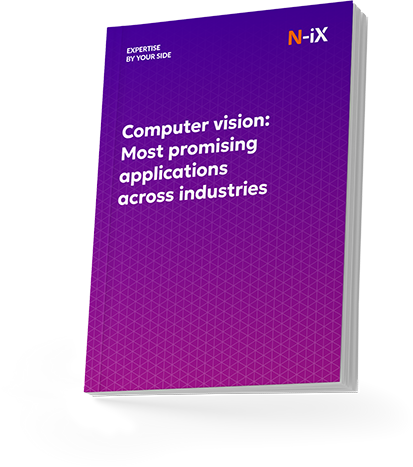

Success!

For urban planners and traffic authorities
Computer vision systems support intelligent transportation management at the city scale:
- Traffic analytics deliver continuous flow data, congestion mapping, and vehicle classification insights, which inform infrastructure planning and signal optimization.
- Smart enforcement using ALPR and red-light violation detection reduces manual enforcement costs and improves compliance with traffic laws.
- Public safety monitoring detects crowding, unauthorized access, or emergencies in stations, terminals, and pedestrian zones.
For port and rail operations
Port terminals and rail networks are heavily dependent on synchronized, high-accuracy processes, areas where computer vision has measurable value:
- Container tracking and verification, using visual IDs and pattern recognition, ensures correct loading, prevents theft, and improves customs compliance.
- Berth and crane scheduling, supported by real-time imaging, optimizes throughput and reduces idle time for ships or trains.
- Rail condition monitoring via vision-equipped drones reduces inspection cycle times while enhancing coverage of hard-to-access areas.
Use cases of computer vision in transportation
1. Driver monitoring
Even the best-trained drivers are human, susceptible to fatigue, distraction, and delayed reactions. Driver distraction detection systems now achieve up to 99.91% accuracy, enabling proactive interventions that reduce collision risk. [1] Today's AI-powered driver monitoring systems analyze micro-expressions, eye closure rates, and head movements to detect early signs of drowsiness, inattention, or phone use behind the wheel.
In practice, this means that a long-haul truck driver exhibiting fatigue warning signs can be alerted before risk escalates or their fleet manager can intervene proactively. In public transport fleets, it helps reduce incidents tied to shift work fatigue and improves overall safety KPIs.
2. License plate recognition
Automatic Number Plate Recognition has evolved far beyond toll booths. Today, ANPR is a cornerstone of smart transportation infrastructure, enabling real-time vehicle identification across highways, parking lots, borders, and restricted zones. Some modern ANPR systems using HD cameras and deep learning achieve 98% recognition rates, even with mixed-format plates [1].
High-speed cameras, paired with computer vision and OCR models, read plates in a split second, regardless of lighting or angle. Computer vision in transportation allows for enforcing congestion pricing, managing access to low-emission zones, or automating fleet entry at logistics centers. For example, a delivery truck entering a gated facility can be recognized, logged, and granted access.
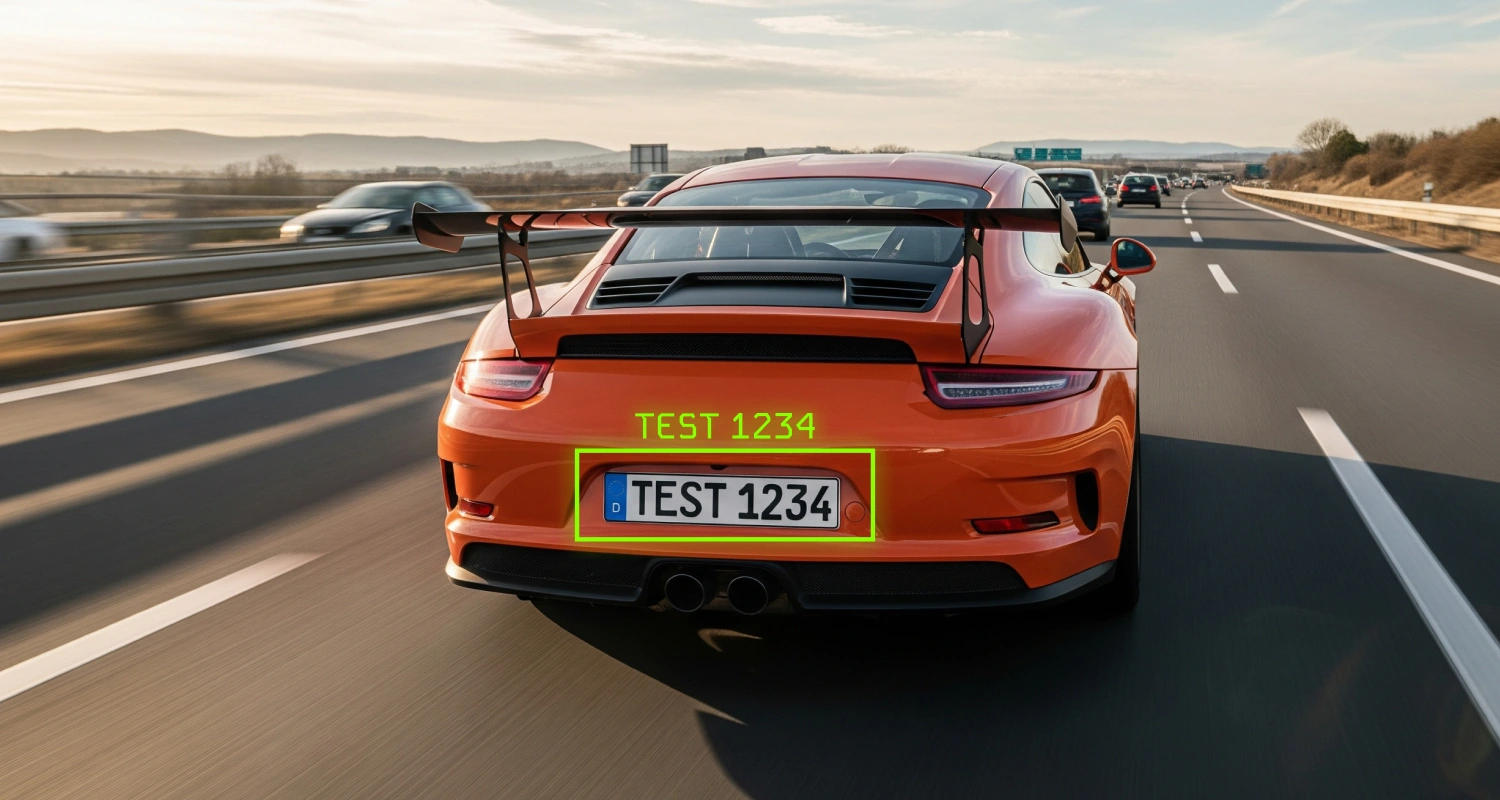
3. Pedestrian and cyclist detection
Computer vision enables vehicles and infrastructure to "see" vulnerable road users precisely, reducing blind spot risks and improving overall traffic harmony. It's used in advanced driver assistance systems (ADAS), autonomous vehicles, and smart traffic lights. At the infrastructure level, AI-driven people counting from overhead cameras supports crowd flow analysis in subway stations, stadiums, and urban crossings. For example, cities can automatically adjust signal timing during large events or open alternate routes based on live pedestrian density.
Cyclist detection is also embedded into last-mile delivery vehicles and fleet vans operating in bike-heavy districts, reducing liability and enhancing public safety.
Read also: Top use cases of computer vision in automotive industry
4. Object detection and classification
Object detection is at the core of most modern traffic and logistics systems, specifically the ability to identify, classify, and track vehicles with high precision. Using deep learning models like YOLO or SSD, these systems detect the presence of a car and its type, movement, and behavior over time.
The feature enables real-time vehicle counting, monitoring dwell times, and detecting unplanned stops, whether a stalled delivery truck on a bridge or a vehicle lingering too long at a loading bay. For example, ports and rail yards now use these systems to track container trucks and optimize slot scheduling based on actual movement, not assumptions.
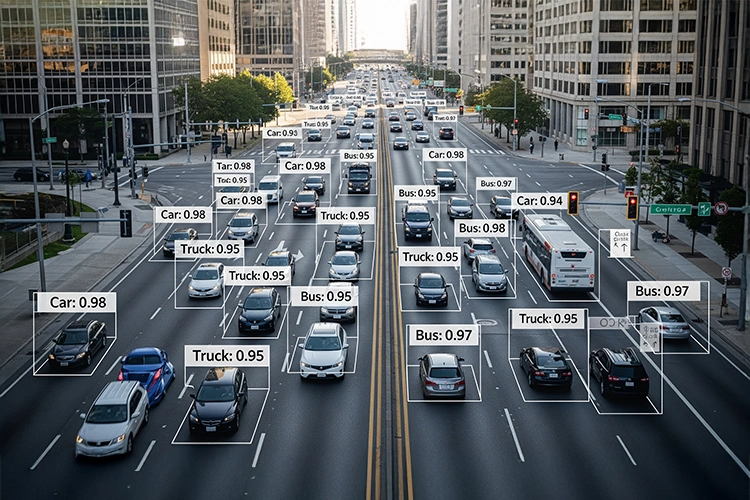
Stopping behavior detection is equally important for flagging suspicious activity, operational delays, or safety threats on highways and critical infrastructure zones. The result is better use of assets, quicker response times, and fewer blind spots in daily operations.
5. Traffic flow and congestion analysis
Even the best-designed cities can halt without timely, accurate traffic insights. Redflex's collaboration with N-iX demonstrates how computer vision transforms traffic monitoring from passive sensing to intelligent enforcement. Traditional systems struggle to capture complex driver behavior and subtle traffic patterns. In contrast, the Redflex solution, powered by deep learning and real-time video analysis, achieves 91% accuracy in detecting distracted driving and 88% in seat belt violation recognition. These metrics hold across challenging lighting conditions and camera angles, making the system reliable for 24/7 enforcement.
By detecting lane occupancy, vehicle density, illegal turns, and other dynamic traffic variables in real time, such solutions enable more responsive infrastructure. Traffic authorities can use this intelligence to adjust signal timing, identify bottlenecks, or enforce high-risk behaviors automatically. Moreover, video-based analytics provide high-quality datasets for long-term planning, from evaluating the impact of road safety policies to optimizing toll systems and urban layouts.
Cities like Zurich and Seoul already use these tools to adjust signal timing automatically based on real-time vehicle flow. Transportation authorities also gain long-term datasets they can trust when prioritizing infrastructure upgrades, evaluating the impact of traffic policies, or experimenting with smart tolling and dynamic lane control. Based on the studies, Smart Traffic Video Analytics (STVA) has achieved incident detection accuracy between 2% and 5%, compared to 20-30% for traditional systems [2].
6. Road condition monitoring
Poor road conditions signal underfunded maintenance and erode public trust. The old model of occasional manual inspections leaves too many issues undetected for too long. For instance, CNN-based crack detection models have reported accuracies ranging from 98.47% to 99.46% [1], significantly outperforming manual inspections. With computer vision in transportation, agencies can continuously monitor road surfaces using dashcams or drone footage, then analyze that data using AI models trained to detect cracks, potholes, and surface wear in real time.
These models classify severity, geo-tag locations, and generate repair priorities. In some European highway networks, these systems are deployed on maintenance fleets that scan roads daily, flagging issues well before they become safety hazards or costly repairs.
7. Cargo and freight inspection
Missing a single anomaly can lead to costly delays when managing thousands of bags, containers, or pallets each hour. Computer vision adds a powerful layer of intelligence and security by automating inspection across transport hubs, ports, and warehouses. Autonomous trucking increases driving hours from 11 to 20 per day, allowing 24/7 freight movement and reducing delivery times [3].
For freight, CV verifies container volumes, detects deformation, and flags mismatched barcodes or unauthorized placements. In passenger zones like airports or train stations, vision systems track objects that break expected behavior, such as luggage left behind for more than 30 seconds. At JFK and Heathrow, these systems are standard in high-risk zones, allowing staff to react within moments, not minutes.
This automation within computer vision in logistics helps operators reduce checkpoint bottlenecks, while public facilities can meet strict safety compliance without exhausting human resources. It's precision and peace of mind, delivered at scale.
8. Road pavement defect detection
Manual road inspections are time-consuming, error-prone, and reactive. Computer vision systems, often powered by photogrammetry, LiDAR, and ground-penetrating radar (GPR), automate the detection of surface defects, such as cracks, potholes, and rutting. These systems classify and quantify damage with high precision using deep learning segmentation models, enabling asset managers to prioritize interventions, extend pavement life, and optimize infrastructure budgets. When integrated into mobile mapping systems (MMS), they provide real-time, comprehensive, geolocated condition assessments.
For example, national road agencies in the US and Europe now use mobile mapping systems and LiDAR-equipped survey vehicles to automate annual pavement evaluations across thousands of kilometers.
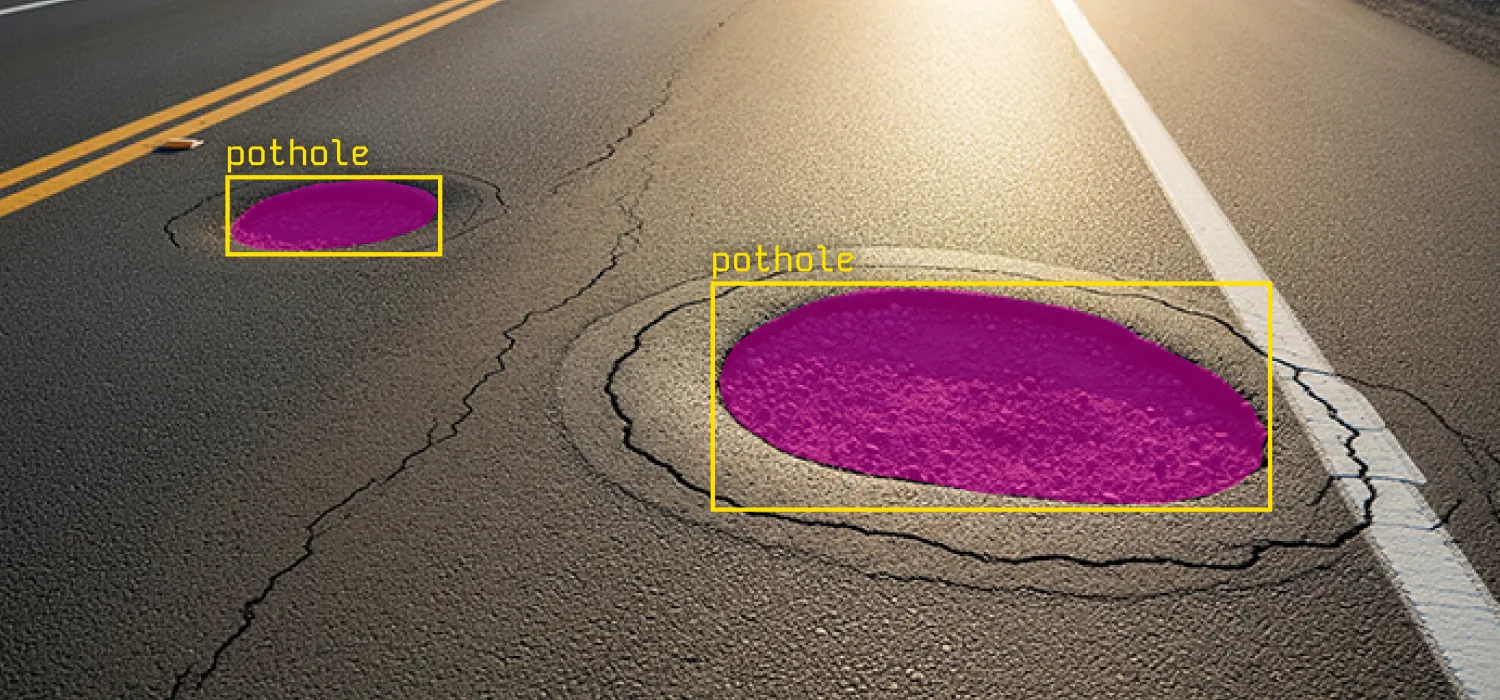
9. Autonomous vehicles and advanced driver assistance systems (ADAS)
Computer vision is at the core of perception in ADAS and fully autonomous vehicles. Real-time object detection enables vehicles to respond to dynamic road conditions, such as identifying cars, pedestrians, cyclists, lane boundaries, traffic signs, and traffic lights. Lane keeping systems use edge-based vision algorithms for steering control, while path planning and depth estimation rely on 3D imaging and convolutional neural networks. Driver monitoring modules track fatigue and distraction, triggering alerts and adaptive interventions. These functionalities are essential to improving safety and advancing toward Level 4+ vehicle autonomy.
In logistics and supply chain, autonomous trucks are projected to cut operating costs by 45% and increase utilization [3]. With constrained autonomy (Level 4), truck TCO could drop by 20%, and complete autonomy (Level 5) may cut it by 45%.
10. Parking occupancy detection and management
Urban congestion isn't just about roads; it's also about drivers circling for parking. Studies show CV-based systems achieve 86-96% parking and bus lane occupancy detection rates, with 79-86% precision/recall for illegal parking [1]. Computer vision offers a scalable way to detect real-time parking availability, transforming surface lots and multi-level garages into intelligent infrastructure.
Computer vision and imaging in intelligent transportation systems use fixed or mobile cameras to monitor parking spaces, classify occupancy status, and push that data to apps, signage, or municipal traffic platforms. Airports, shopping malls, and transit hubs also benefit, enabling guided parking and dynamic pricing models that optimize turnover.
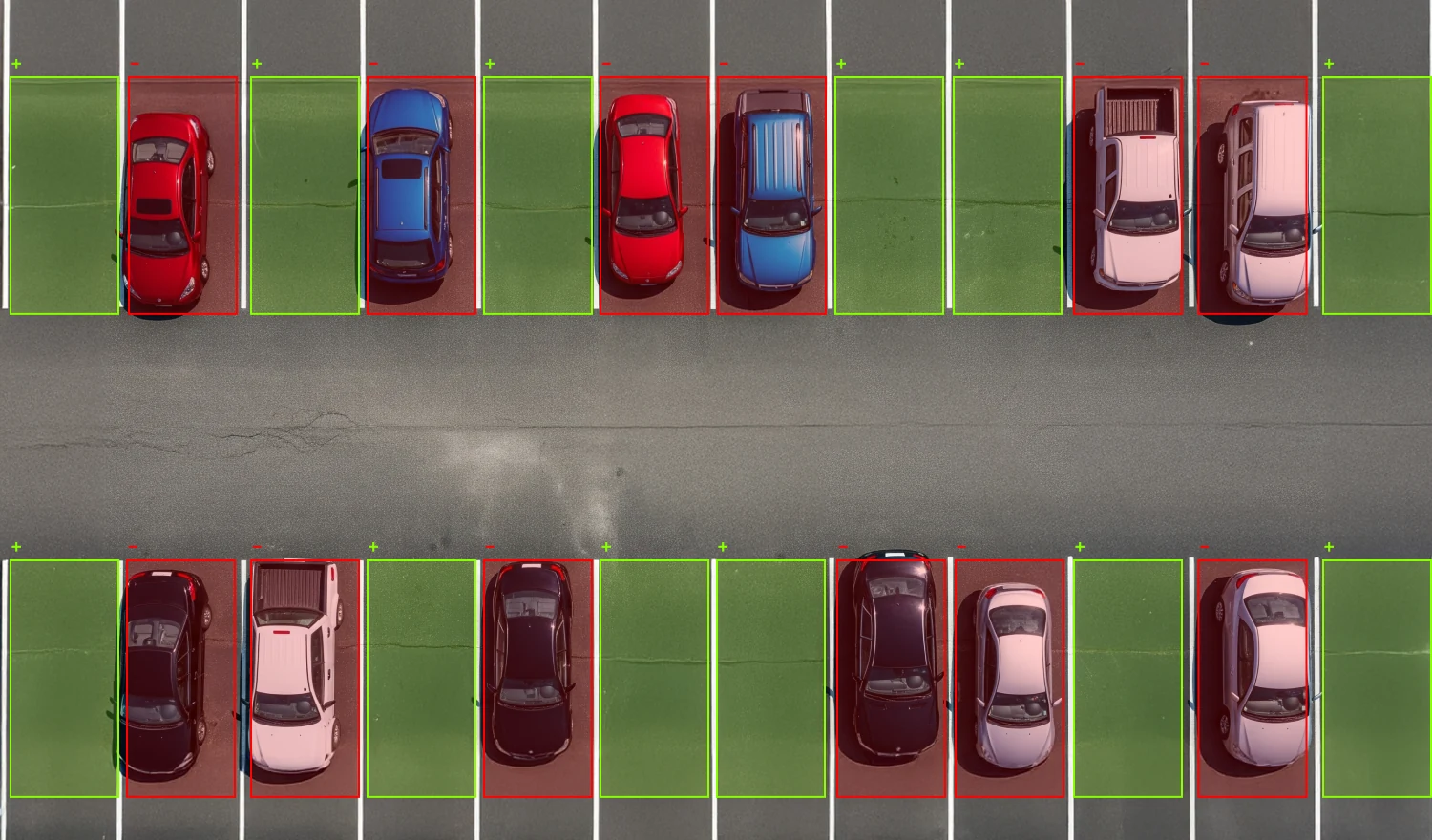
Instead of relying on costly in-ground sensors, CV-based parking systems scale faster across city blocks or entire fleets, cutting hardware costs and improving detection accuracy, especially in mixed-use spaces or outdoor lots where conditions vary widely.
11. Predictive maintenance
With computer vision, transport operators can detect the subtle signs of wear long before they trigger breakdowns or safety incidents. High-resolution cameras mounted on vehicles or drones scan bridges, rail lines, roadways, and fleet assets, feeding that data into AI models trained to detect microfractures, corrosion, potholes, and alignment shifts.
For example, highway authorities in Japan use CV-equipped inspection vehicles that analyze pavement quality and automatically flag potholes by size, location, and severity. In parallel, computer vision in transportation monitors compliance with personal protective equipment (PPE) in high-risk zones like rail yards, tarmac areas, or ports. Vision systems verify that workers wear hard hats, vests, or gloves, and trigger real-time alerts for violations.
Visual inspections of rolling stock, road infrastructure, bridges, tunnels, and port equipment are replaced or augmented by high-resolution cameras and thermal imaging devices. These are often paired with edge AI and IoT sensors to identify surface anomalies, component wear, and overheating, triggering proactive maintenance before failures occur. In rail, computer vision supports inspecting catenary systems, wheelsets, and tracks. In aviation, it aids in detecting fuselage or wing defects during ground operations.
As part of its work with a Fortune 100 German manufacturing giant, N-iX developed an industrial computer vision system to automate package detection, barcode scanning, and damage recognition across over 400 warehouses worldwide. Using edge computer vision pipelines powered by NVIDIA Jetson devices and robust ML workflows, the system enables near real-time cargo tracking and inspection of box conditions, even under challenging environments such as angled cameras or stained labels.
Read the full case study on applying computer vision in logistics in the case study
Getting started with applying computer vision for transportation
Roads, railways, ports, and warehouses generate massive streams of images and video daily, but this data remains untapped without the right tools. Computer vision turns these visuals into decisions: detecting accidents in real time, optimizing vehicle flows, automating inspections, and anticipating equipment failures before they happen.
What was once experimental is now operational. And what's operational is quickly becoming expected. Leaders who invest early gain measurable advantages in safety, reliability, and cost control, while those who wait risk being left behind by more data-driven competitors.
N-iX helps transportation and logistics companies move from theoretical discussions to practical implementation. With 23+ years on the market, we've delivered over 60 successful data science and AI projects. Our team brings together 200+ data, AI, and ML experts, supported by a 2,400+ strong engineering workforce.
Companies from Fortune 500 choose N-iX because we deliver AI models and engineer robust, production-grade systems tailored to specific business and technical constraints. Whether you want to optimize fleet performance, implement vision-powered safety systems, or build smart transportation infrastructure, we support you across the full lifecycle.
References
- Computer Vision Applications in Intelligent Transportation Systems: A Survey - Esma Dilek and Murat Dener
- Smart Traffic Video Analytics (STVA) and Edge Computing (EC) - Dr. Chengjun Liu, Professor, Department of Computer Science, New Jersey Institute of Technology
- Route 2030: The fast track to the future of the commercial vehicle industry - McKinsey
Have a question?
Speak to an expert
